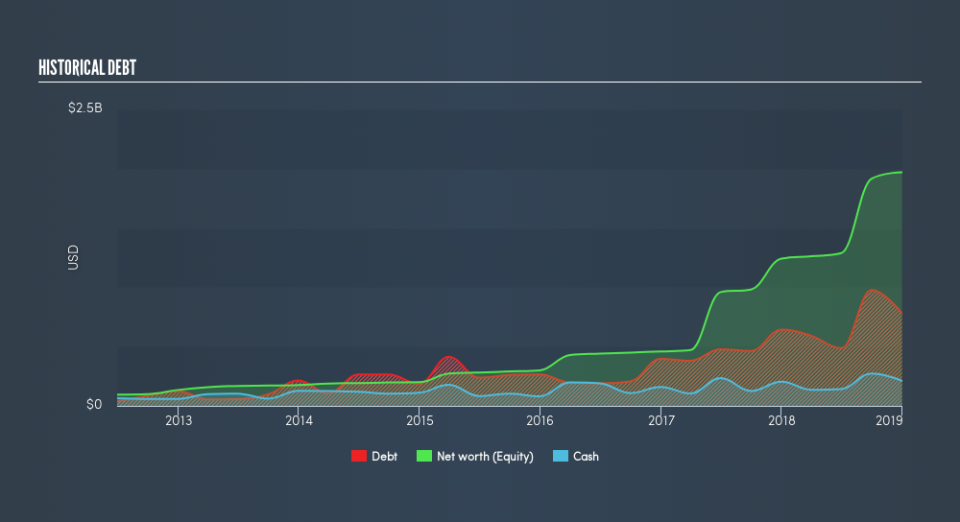Why Pacific Premier Bancorp, Inc. (NASDAQ:PPBI) May Not Be As Risky Than You Think

Improving credit quality as a result of post-GFC recovery has led to a strong environment for growth in the banking sector. As a small-cap bank with a market capitalisation of US$1.8b, Pacific Premier Bancorp, Inc.’s (NASDAQ:PPBI) profit and value are directly affected by economic growth. This is because borrowers’ demand for, and ability to repay, their loans depend on the stability of their salaries and interest rates. Risk associated with repayment is measured by bad debt which is written off as an expense, impacting Pacific Premier Bancorp’s bottom line. Since the level of risky assets held by the bank impacts the attractiveness of it as an investment, I will take you through three metrics that are insightful proxies for risk.
See our latest analysis for Pacific Premier Bancorp
How Good Is Pacific Premier Bancorp At Forecasting Its Risks?
The ability for Pacific Premier Bancorp to accurately forecast and provision for its bad loans shows it has a strong understanding of the level of risk it is taking on. We generally prefer to see that a provisions covers close to 100% of what it actually writes off, as this could imply a sensible and conservative approach towards bad loans. Given its large non-performing loan allowance to non-performing loan ratio of over 500%, Pacific Premier Bancorp has over-provisioned relative to its current level of non-performing loans, which could indicate the bank is expecting to incur further bad loans in the near future.
What Is An Appropriate Level Of Risk?
Pacific Premier Bancorp’s operations expose it to risky assets by lending to borrowers who may not be able to repay their loans. Loans that cannot be recuperated by the bank, also known as bad loans, should typically form less than 3% of its total loans. When these loans are not repaid, they are written off as expenses which come directly out of the bank’s profit. Since bad loans only make up an insignificant 0.055% of its total assets, the bank may have very strict risk management - or perhaps the risks in its portfolio have not eventuated yet.
How Big Is Pacific Premier Bancorp’s Safety Net?


Pacific Premier Bancorp profits from lending out its various forms of borrowings and charging interest rates. Deposits from customers tend to carry the lowest risk due to the relatively stable interest rate and amount available. The general rule is the higher level of deposits a bank holds, the less risky it is considered to be. Pacific Premier Bancorp’s total deposit level of 91% of its total liabilities is very high and is well-above the sensible level of 50% for financial institutions. This may mean the bank is too cautious with its level of its safer form of borrowing and has plenty of headroom to take on risker forms of liability.
Next Steps:
How will PPBI’s recent acquisition impact the business going forward? Should you be concerned about the future of PPBI and the sustainability of its financial health? Below, I've listed three fundamental areas on Simply Wall St's dashboard for a quick visualization on current trends for PPBI. I've also used this site as a source of data for my article.
Future Outlook: What are well-informed industry analysts predicting for PPBI’s future growth? Take a look at our free research report of analyst consensus for PPBI’s outlook.
Valuation: What is PPBI worth today? Has the future growth potential already been factored into the price? The intrinsic value infographic in our free research report helps visualize whether PPBI is currently mispriced by the market.
Other High-Performing Stocks: Are there other stocks that provide better prospects with proven track records? Explore our free list of these great stocks here.
We aim to bring you long-term focused research analysis driven by fundamental data. Note that our analysis may not factor in the latest price-sensitive company announcements or qualitative material.
If you spot an error that warrants correction, please contact the editor at editorial-team@simplywallst.com. This article by Simply Wall St is general in nature. It does not constitute a recommendation to buy or sell any stock, and does not take account of your objectives, or your financial situation. Simply Wall St has no position in the stocks mentioned. Thank you for reading.

